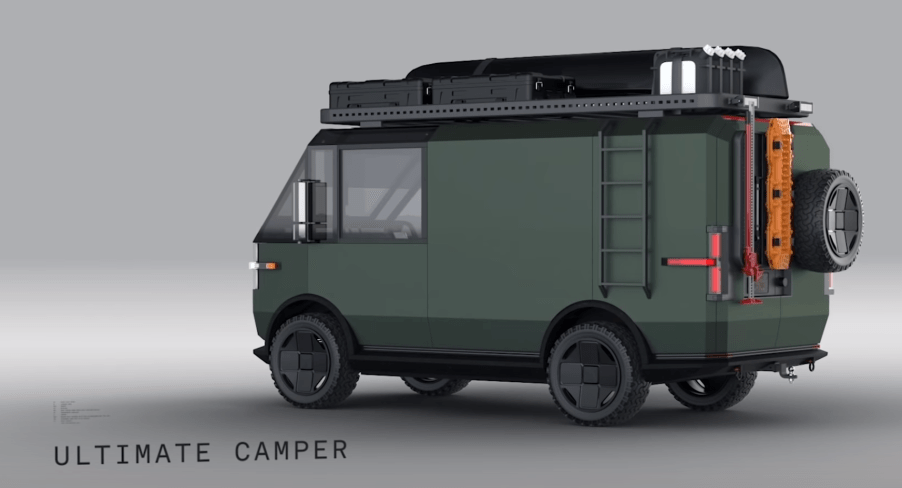
Canoo EV Adventure Vehicle: Don’t Call It A Van
Canoo is one of the myriad startups aiming for electric vehicle gold. It is primarily a commercial vehicle company dealing in various configurations of delivery vans. But it also has capabilities for creating a camping or “adventure vehicle” that looks perfect for those looking for an RV to get off of the grid and into the woods.
This is just one of its Canoo’s commercial vans set up for living inside

Vans make great campers but they may or may not be as cost-effective as a straight-up RV. But powered by electric motors that cost differential may turn positive since it will cost far less to operate. Specifically, this Canoo van is just one of its commercial vans set up for living inside. Its “Ultimate Camper” concept is just the same as a box van but is much more integrated.
Going from one end of the US to the other can be expensive with a diesel or gas RV, and those prices are going up as electric cars and trucks become more common. It can be over $1,000 for fuel in a coast-to-coast trek. With only one mile per kWh, which would be the very minimum of efficiency, the cost should be cut in half or even more. Realistically, a cross-country trip in an electric RV should be around $300.
Stopping to charge won’t be able to be done in the wilderness

There are some drawbacks to electric RVs. Stopping to charge won’t be able to be done in the wilderness, but instead would need to happen at an RV park. But you’ve got a small house at your disposal and charging overnight should not impede your adventures. You’ll also need to invest in an EVSE to adapt level 2 charging from what is available at RV parks. These usually run from $500 to-600.
Solar panels can offset some battery usage. Depending on how much kitchen appliances draw you may need a generator, but then you might not. Factored into the overall costs of converting the Canoo it might be a good idea to incorporate one just in case.
Because Canoo has a modular skateboard platform for its delivery vans you could conceivably outfit the box just about any way you wanted. RVs come in three basic configurations. Class A is the large motor home that looks like a converted bus. Class B and Class C are more recognizable as an identifiable van or truck front end. The difference is Class C has sleeping quarters above the cab.
The Canoo being a box it can be sliced and diced any way you want

As cleantechnica points out, the Canoo “box” being just a big box it can be sliced and or diced any way you want. So making it expandable as you see on some motorhomes is doable. And there is some fun in planning out your living space. Or you can have it all done professionally by van or RV conversion companies.
Electric RVs are coming, and they could change how we camp and adventure travel. Making some slight alterations from how we’ve done it for the last 50 years could result in a great experience that is cheaper and creates less of a carbon footprint.



